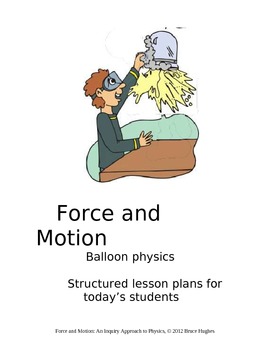- Word Document File
Description
********* FEATURES *********
- Over 50 pages of student activities and teacher content.
- Hyper-linked Table of Contents for easy access to all features
- Three readings with anticipation guides (before reading and after reading student question sheets)
- Four assessments on different levels over the same material
- Answer keys or rubrics for all student assignments (depending on the nature of the assignment.)
********* Details *********
Force and Motion: An Inquiry Approach to Physics is a curriculum in which students are challenged to solve problems that require a broad range of concepts and techniques. The initial presentation of the problem is followed by discussion sessions in which concept development is the key concern. By using student generated examples and teacher led demonstrations and exercises, the instructor activates the student's background knowledge and front loads information that will be used later. The students are then grouped according to several factors based on teacher observation and previous evaluations and are given time to work on a laboratory problem. The instructor serves as a facilitator during the inquiry process, providing guidance as necessary and helping students to evaluate the quality of their products. Invariably, the solution of the problem will lead to measurement and graphing. The analysis of graphs is a key component of the inquiry process and is the basis of the student's ability to understand mathematical relationships in physics and to make predictions based on their observations. The laws of physics are all taught as being consequences of data analysis and the equations are simply another way of describing the relationships that the student learns in terms of graphical analysis. The mathematical relationships are presented in terms of the information "discovered" by the students during the activities.
To make the material more assessable to all students, mathematical expressions are replaced by the extensive use of concepts maps that clearly lay out the relationships. The concept maps were created to parallel the relationships represented in the equations. Problem sets are not included, since many fine sources of physics problems are available at little or no cost.
The table of contents is active-linked to the sections of the book, and the assignments are active-linked to the assignment keys within the Word document. There is also a link to my web-mail and I encourage you to contact me to ask questions or make suggestion.
Over my 30 year career as a high school physics teacher, a middle school physical science teacher, and a facilitator and training for new teachers, I have found that these lesson plans can be used over a large range of student ages and capability.
Bruce Hughes





